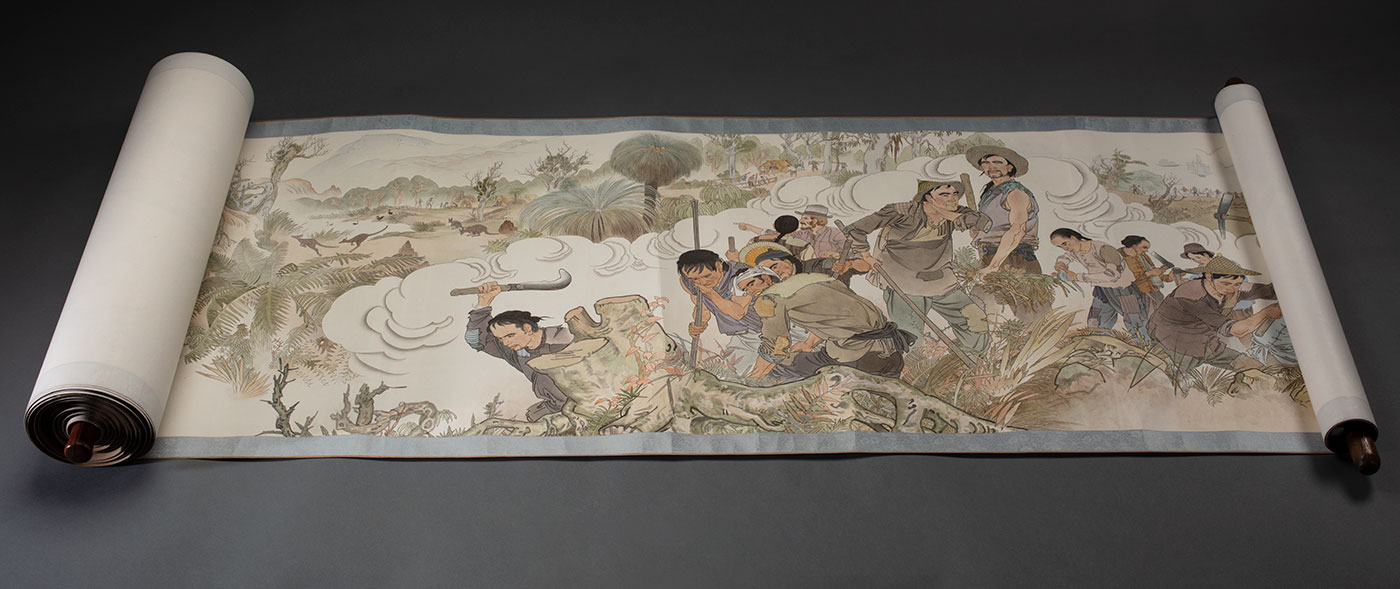
Reading direction
As with traditional Chinese scrolls, the Harvest of Endurance is read from right to left. The initial inscription appears at the right-hand end of the scroll, and the final inscription at the left-hand end.
Balance
The aim of the gong bi style of painting is to achieve harmony through balance and an application of the principles of yin and yang. Thick lines are balanced with fine lines; soft colours are contrasted with more vibrant colours. Some themes are painted in great detail, while others, such as paintings of swirling clouds, allow the eye to rest and the imagination to interpret freely. The artists also imagined the story they were trying to tell as a melody or 'a sound wave with peaks and troughs' occurring at different stages throughout the scroll.
Time and place
The scroll is neither strictly chronological, nor tied to a geographical order. The subject of each section also varies from actual events, to specific eras, to key personalities. The foreground and the background of a scene can be used to depict different activities in completely opposite areas of Australia. For example, one scene shows rice being transplanted near Darwin in the foreground, while in the background the Murray riverboat trade is depicted.
Change
Colour is used to symbolise change. The soft tertiary greys, browns and blues which the artists found in the Australian landscapes near Young, Braidwood, Castlemaine, Ballarat, Bendigo and Maldon are dominant in the first sections of the scroll. The artists used these colours to represent not only the landscape but also the era and the hardships endured by Chinese labourers.
Sections of the scroll representing later periods are painted using stronger colours to indicate a change of mood for what was largely a happier and more successful time for Chinese people in Australia.
To indicate a change of theme or era the artists have painted various species of Australian flora. For example in one, southern east coast banksias are juxtaposed with banana trees to denote the change in theme.